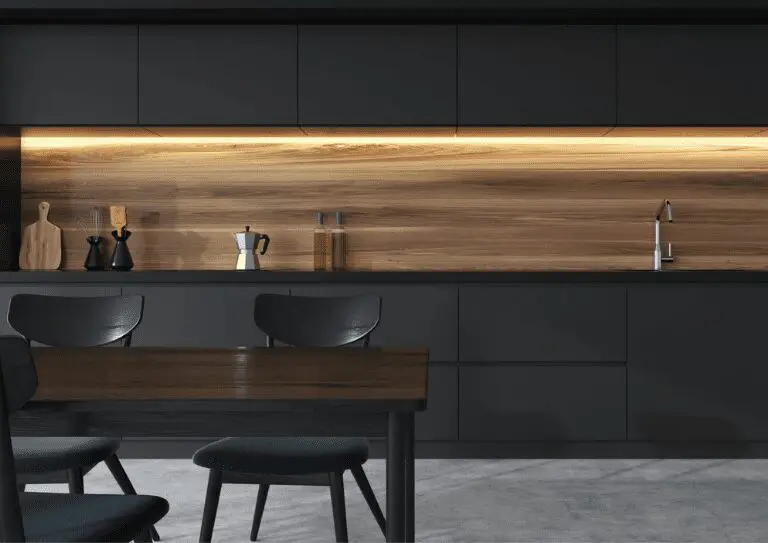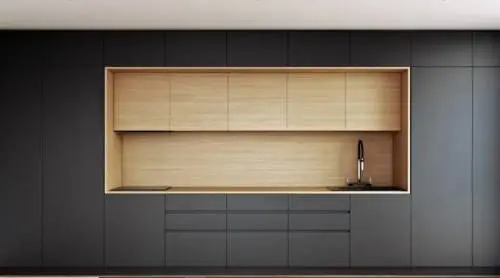
How to choose sustainable materials for your kitchen furniture
Choosing sustainable materials for your kitchen furniture is an important step in reducing your environmental impact and creating a more eco-friendly home. Here are some tips to help you select sustainable materials for your kitchen furniture.
1. Look for FSC-Certified Wood
The Forest Stewardship Council (FSC) is an organization that operates as an independent, non-profit entity. Its primary objective is to advocate and promote responsible management of the world’s forests. The FSC aims to address concerns related to deforestation and the overexploitation of forests for commercial purposes.
By selecting FSC-certified wood, you can be sure that your furniture has been produced in a way that minimizes the impact on the environment, and that the people who work in the forest and the communities that depend on the forest have been treated fairly. Furthermore, FSC-certified wood is traceable, so you can be sure that the wood used in your furniture comes from a certified source.
2. Choose Bamboo
Bamboo is a plant that has been used for centuries in many different cultures for a variety of purposes. It is a fast-growing and renewable resource that has recently gained popularity as a material for kitchen furniture. Bamboo’s rapid growth rate makes it an ideal renewable resource, as it can be harvested and regrown quickly, unlike many other types of wood.
One of the great benefits of using bamboo for kitchen furniture is its durability. Bamboo is a sturdy material that is highly resistant to scratches, dents, and other types of damage. This makes it an ideal choice for kitchen furniture, as it can withstand the wear and tear of daily use.
Another advantage of bamboo is that it is easy to clean. Its smooth surface makes it simple to wipe down with a damp cloth, and it is resistant to stains and odors. This makes it an excellent choice for kitchen countertops, cutting boards, and other surfaces that are likely to come into contact with food.
Bamboo also has a natural, beautiful look that adds warmth and character to any kitchen. Its distinctive grain patterns and earthy colors give it a unique appearance that is both elegant and understated. Additionally, bamboo can be stained or finished in a variety of ways to match any kitchen decor.
Consider Reclaimed Wood:
Choosing to use reclaimed wood for your kitchen furniture is a sustainable option that can help reduce the demand for new wood. Reclaimed wood is obtained from various sources, such as old buildings and barns, and gives your furniture a distinctive and charming rustic appearance.
Furthermore, reclaimed wood is often of higher quality than new wood, as it has been aged and seasoned naturally over time. This natural aging process can result in wood that is more stable, durable, and resistant to warping or cracking. The unique history and character of reclaimed wood can also add a sense of charm and personality to your kitchen furniture that cannot be replicated with new wood.

3. Consider Reclaimed Wood
Choosing to use reclaimed wood for your kitchen furniture is a sustainable option that can help reduce the demand for new wood. Reclaimed wood is obtained from various sources, such as old buildings and barns, and gives your furniture a distinctive and charming rustic appearance.
Furthermore, reclaimed wood is often of higher quality than new wood, as it has been aged and seasoned naturally over time. This natural aging process can result in wood that is more stable, durable, and resistant to warping or cracking. The unique history and character of reclaimed wood can also add a sense of charm and personality to your kitchen furniture that cannot be replicated with new wood.
4. Choose Locally-Sourced Materials
Opting for locally-sourced materials is a sustainable choice that can significantly reduce the environmental impact of transportation. When you choose materials that are produced within a reasonable distance from your home, you are minimizing the energy needed to transport them, which results in fewer greenhouse gas emissions and air pollutants.
When searching for materials for your home, consider looking for suppliers that source their materials from nearby locations. This could include locally-grown wood, stone, or other materials that are commonly found in your area. By choosing these materials, you are not only supporting local businesses but also using materials that are often better suited to the local climate and environment.
5. Avoid Toxic Chemicals
When selecting materials for your kitchen furniture, it is essential to avoid those that contain toxic chemicals. Many commonly used materials are often treated with harmful chemicals like formaldehyde and volatile organic compounds (VOCs), which can be harmful to your health and the environment.
Formaldehyde is a colorless gas that is commonly used in adhesives to bind wood particles together. Exposure to formaldehyde can cause respiratory problems, irritation of the eyes, nose, and throat, and even cancer. VOCs, on the other hand, are chemicals that are emitted from various materials and can cause similar health problems.
To avoid these toxic chemicals, look for materials that are free of formaldehyde and VOCs. One option is to choose solid wood furniture, which is often treated with natural oils or waxes instead of harmful chemicals. Another option is to look for materials that have been certified as low in formaldehyde and VOCs, such as those that have received the Greenguard certification.
It is also important to be aware of the finishes used on your kitchen furniture. Many finishes, such as paint and varnish, can contain harmful chemicals. Look for finishes that are low in VOCs, or consider using natural finishes such as beeswax or linseed oil.
6. Consider Durability
Choosing durable materials for your kitchen furniture is an eco-friendly choice that can help minimize waste and reduce the need for replacements. Durable materials like solid wood and metal are strong, long-lasting, and can withstand the wear and tear of everyday use.
By opting for durable materials, you are not only reducing the amount of waste generated from replacing furniture but also saving money in the long run. Investing in high-quality, durable materials can be more expensive upfront, but it can save you money in the long run because you won’t need to replace your furniture as frequently.
Moreover, durable materials can also add value to your home. High-quality, long-lasting materials are often more desirable to potential buyers, which can increase the resale value of your home.
By following these tips, you can select sustainable materials for your kitchen furniture that are both eco-friendly and functional. Remember to look for certifications and choose materials that are free of harmful chemicals to create a safer and more sustainable home.
JS DECO has been awarded a number of certificates and awards which confirm the quality of our product and services.







Are you ready to start your project? Ask for a free consultation and arrange a visit to our furniture workshop – studio!
